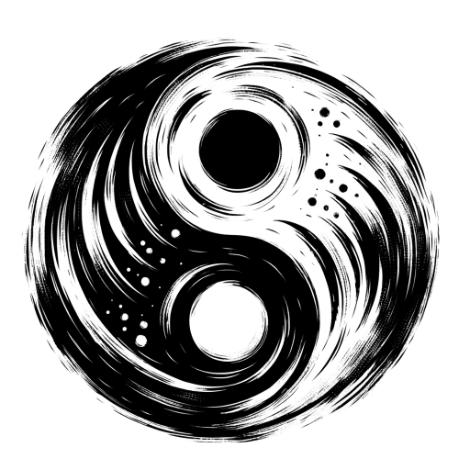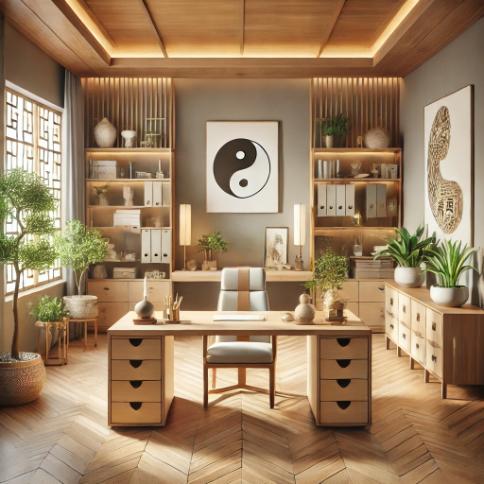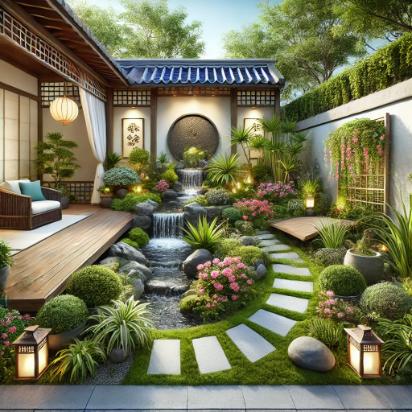Feng Shui, an ancient Chinese practice, focuses on harmonizing individuals with their surrounding environment. Rooted in Taoist philosophy, it emphasizes the flow of energy (qi) and its impact on health, wealth, and overall well-being.
Origins and History
Feng Shui dates back thousands of years and has evolved through various Chinese dynasties. Initially used in the placement of tombs and homes, its principles were later applied to urban planning and interior design.
- Origins: Ancient China, thousands of years ago
- Initial Uses: Placement of tombs and homes
- Evolution: Applied to urban planning and interior design
Core Principles
The practice of Feng Shui revolves around several key principles that aim to balance and enhance the flow of energy within a space.
Qi (Chi)
Qi, or life force energy, is the fundamental concept in Feng Shui. Practitioners believe that the flow of qi affects all aspects of life, and proper arrangement of spaces can enhance this flow.
- Concept: Life force energy
- Importance: Affects health, wealth, and well-being
Yin and Yang
Balancing the opposing forces of yin (passive) and yang (active) is crucial in Feng Shui. Harmonizing these energies creates a balanced and harmonious environment.
- Yin: Passive, soft, dark, cool
- Yang: Active, hard, bright, warm
- Balance: Key to harmony

Five Elements
Feng Shui incorporates the five elements (wood, fire, earth, metal, water) to create balance and harmony. Each element has specific attributes and associations, influencing different aspects of life.
- Wood: Growth, vitality
- Fire: Passion, energy
- Earth: Stability, nourishment
- Metal: Clarity, precision
- Water: Flow, abundance
Bagua Map
The Bagua Map is a tool used to analyze and arrange spaces according to Feng Shui principles. It divides a space into nine areas, each corresponding to different life aspects such as wealth, fame, relationships, and health.
- Bagua Map: Tool for analyzing and arranging spaces
- Nine Areas: Wealth, fame, relationships, health, and more
Applications of Feng Shui
Feng Shui principles can be applied to various aspects of life, from home and office design to garden layout and urban planning.
Home Design
In home design, Feng Shui aims to create a harmonious living environment by optimizing the placement of furniture, color schemes, and decorative elements.
- Furniture Placement: Enhances qi flow
- Color Schemes: Balances yin and yang
- Decorative Elements: Supports five elements

Office Design
In the workplace, Feng Shui principles can improve productivity, creativity, and well-being by arranging desks, lighting, and common areas to support positive energy flow.
- Desk Arrangement: Promotes productivity
- Lighting: Enhances energy and focus
- Common Areas: Encourages collaboration

Garden Layout
Feng Shui in garden design emphasizes the natural flow of qi, incorporating water features, plants, and pathways to create a serene and balanced outdoor space.
- Water Features: Enhances qi flow
- Plants: Represents growth and vitality
- Pathways: Guides energy smoothly

Criticism and Modern Adaptations
While Feng Shui has ancient roots and a rich history, it has faced criticism, particularly from the scientific community, for its lack of empirical evidence. However, many people continue to find valueIn color theory, value refers to the lightness or darkness of a color. This concept is crucial for artists and designers because it helps create depth, contrast, and visual interest in their work. Value is one of the three properties of color, alongside hue and saturation. Defining Value Value indicates how light or dark a color appears. It ranges from More in its principles, adapting them to modern lifestyles and preferences.
- Criticism: Lack of empirical evidence
- Modern Adaptations: Practical applications in contemporary settings
Conclusion
Feng Shui remains a popular practice for those seeking to harmonize their living and working environments. Its principles, rooted in the balance of energy, continue to influence various aspects of design and lifestyle, offering a unique perspective on achieving well-being and harmony.
You might enjoy reading further articles on Asian art by Pigment Pool:
Bamboo Art: Picture Serenity through Chinese Brushwork
Yin-Yang Aesthetic: A Symbol Transcending Time and Culture
Mandala Therapy: Art Techniques to Soothe Anxiety and Stress
Exploring Chinese Art: Tiger Symbolism, Styles, and Inspirations
Free Chinese Art Tiger Coloring Pages: Download for Art Enthusiasts
A brief history of colour pigments
Impressionism and Japonisme: How Japan Has Inspired Western Artists
